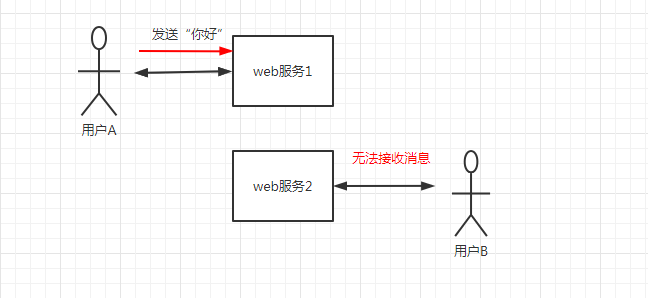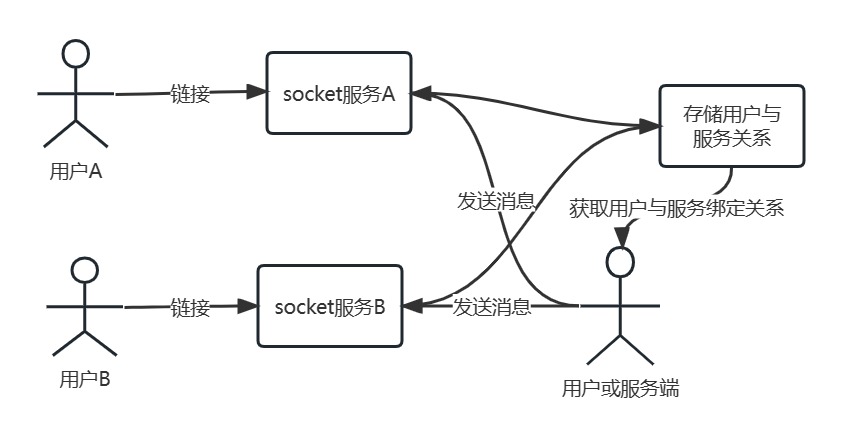WebSocket集群解决方案,不用MQ
首先不了解WebSocket的可以先看看这篇文章,以及传统的WebSocket方案是怎么做的,https://www.cnblogs.com/jeremylai7/p/16875115.html 这是用MQ解决的版本,那么这种方案存在什么问题呢。
第一:增加MQ,可能造成消息挤压、消息顺序的问题
第二:增加MQ,则还需要保证MQ的可用性
第三:每个socket服务都需要去消费消息,增加每个服务的压力(做无用功)
那么,基于以上问题,还有没有解决方案呢?
当然有!!!
首先我们理解一个逻辑,为什么WebSocket不能直接做集群,socket是一个长链接,当我们要给socket用户发送消息的时候,我们不知道用户是连接到哪一个服务上面的,这样就无法直接发送消息了

那么,我们能不能给每一个socket服务器增加一个标识,然后在用户连接的时候将用户与socket服务器的关系绑定起来,然后在使用的时候再去判断用户存在哪,再给指定的服务器发送消息不就解决问题了吗?

那么,我们来结合springcloud来完成这个工作,根据这个理论,其他方式也可以实现
首先,来看websocket服务,启动的时候主要注意的问题
需要注意的是动态服务名这里,每个服务的名字都是不一样的,这样就保证了每个服务的一个唯一性
这里用到了nacos与redis,使用的地方待会会有,其中SpringApplicationName是在启动的时候传入的
接下来看WebSocket链接时候需要注意的点
其中在链接的时候,将用户ID与socket服务的关系保存进了redis,这样我们在使用的时候就可以根据这个关系,找到对应的socket服务从而实现自己的业务逻辑
然后我们定义一个发送消息的接口
再单独封装一个接口,供使用方使用feign
再来个Service
还有个feign的配置文件,将链接重写DynamicRoutingConfig
那么在使用的时候,我们可以直接调用PushService.pushMessage方法就可以直接给对应的用户发送消息了
那么可能又有人想问了,每个服务都不一样,那网关这些该怎么做,项目源码已经放在了码云上面, https://gitee.com/liupan1230/spring-cloud-websocket-cluster 大家可以参考,同时也有发送方调用示例
欢迎搜索关注微信公众号 基础全知道 :JavaBasis ,第一时间阅读最新文章


 WebSocket集群解决方案,不用MQ,还有什么实现方式?
WebSocket集群解决方案,不用MQ,还有什么实现方式?

